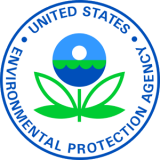EPA Region 7 Recognizes Hartley Elementary School in Lincoln Public School District with Food Recovery Challenge Award

LENEXA, KAN. (JAN. 27, 2022) – Today, the U.S. Environmental Protection Agency (EPA) Region 7 recognizes Lincoln Public School’s Hartley Elementary School in Lincoln, Nebraska, for notable achievements and innovations in EPA’s Food Recovery Challenge in 2020.
“The EPA Food Recovery Challenge Award winners demonstrate how preventing food waste and diverting excess wholesome food away from landfills and to people is important for the environment and for communities,” said EPA Administrator Michael S. Regan. “Their accomplishments serve as excellent examples to other companies, governments, organizations and communities, particularly because food is the single largest category of waste. We have an obligation to follow the lead of our award winners, not only for the sake of 35 million food-insecure Americans, but also to prevent emissions that contribute to climate change.”
Through the Food Recovery Challenge (FRC), EPA has worked with organizations and businesses for the past decade to set data-driven goals, implement targeted strategies to reduce wasted food in their operations, and report results to compete for recognition.
“Community-based organizations and businesses are the lifeblood of our food recovery program,” said EPA Region 7 Administrator Meghan A. McCollister. “As we celebrate Hartley Elementary’s successes with this award, we invite other businesses and organizations to step up and join us in this valuable community endeavor.”
Waste diversion through composting and recycling is one of the Lincoln Public Schools sustainability programs. Hartley Elementary implemented a cafeteria composting program in August 2019, consisting of an unopened food share table, milk carton recycling, and the collection of food scraps and organic material for composting. In the first year, the school collected about 4 tons of organic waste. By 2020, the school increased their collection by 60% by diverting over 6 tons of organic waste from the landfill.
The school’s training and waste diversion education efforts through John Hennings, the school’s daytime custodian, have aided the school in achieving a 51% annual diversion rate for nearly 23 tons of waste that was sent annually to the landfill. When asked about the success of the program, Jennings simply replied, “Plan your work. Work your plan.”
During 2019 and 2020, FRC national awardees implemented innovative approaches and engaged in practical, cost-effective actions and best practices to prevent and reduce wasted food. Many FRC national awardees provided much-needed food during the COVID-19 pandemic.
Nearly 600 businesses, governments and organizations actively participated in EPA’s Food Recovery Challenge in 2020-2021. Since the launch of the program in 2011, FRC partners prevented or diverted over 5.5 million tons of wasted food from entering landfills or incinerators. In the most recent reporting cycle, FRC partners prevented or diverted about 1.2 million tons of food from entering landfills or incinerators, saving partners up to $61.5 million in avoided landfill tipping fees.
Background
Each year in the United States, 73 to 152 million metric tons of food is lost or wasted during all stages of the food supply chain (from primary production to consumption), according to the EPA’s November 2021 report, From Farm to Kitchen: The Environmental Impacts of U.S. Food Waste. Food waste adversely impacts the economy, communities, and the environment by wasting the resources used to grow and transport it. Preventing food waste and keeping food and other organics out of landfills mitigates climate change, as an estimated 8% of global greenhouse gas emissions come from wasted food. At the same time, uneaten food contains enough calories to feed over 150 million people each year, far more than the 35 million estimated food-insecure Americans.
Best practices used by FRC awardees to reduce wasted food in their operations, in addition to actions taken by individuals and communities, keep wasted food from landfills. Their actions also bring the United States closer to meeting the re-aligned national goal with the United Nation’s Sustainable Development Goal Target 12.3 to cut food loss and waste in half by 2030.
Learn more about the Food Recovery Challenge national and regional awardees.
Learn more about the national food loss and waste reduction goal.
# # #
Learn more about EPA Region 7
View all Region 7 news releases
Connect with EPA Region 7 on Facebook: www.facebook.com/eparegion7
Follow us on Twitter: @EPARegion7
